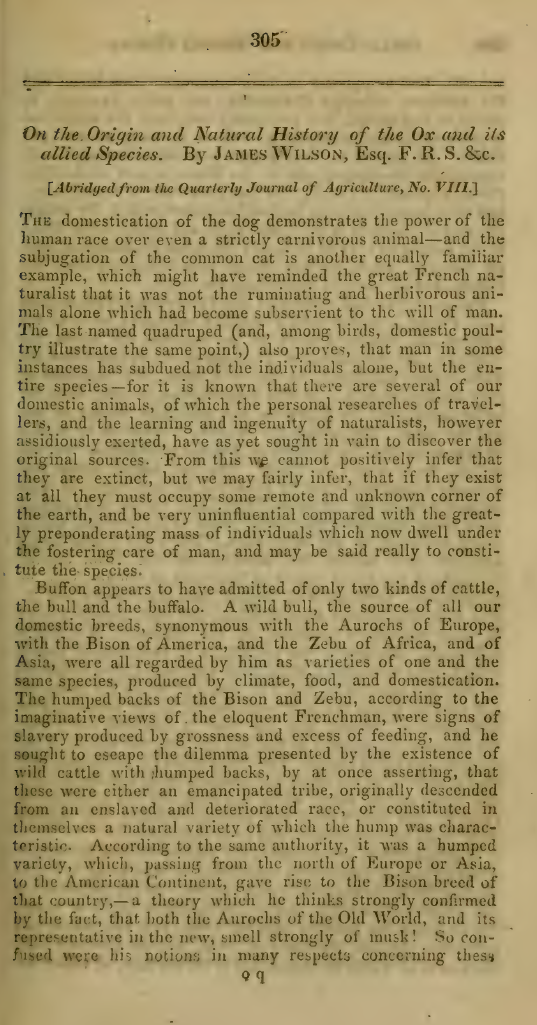On the origin and natural history of the ox and its allied species.
DOI:
https://doi.org/10.21504/saqj.13.2654Keywords:
Taxonomy, Zoological classification, Bos Taurus, Bos Urus, Aurochs, Bison (European and American), Buffalo, Musk-Ox (Ovibos), Gayal, Yack (Bos grunniens)Abstract
This article (abridged from the Quarterly Journal of Agriculture, No. VII) reviews the historical and contemporary understanding of the origin and natural history of the Ox (Bos taurus) and its allied species, with a particular focus on taxonomic distinctions and geographical distribution. The author begins by highlighting the power of human domestication over various animals, refuting the earlier notion (held by Buffon) that only ruminants are subservient to man.
The core of the paper involves critically examining the classifications proposed by earlier naturalists, specifically Buffon (who conflated several species into a single Bos type) and Pallas (who identified four distinct species but mistakenly grouped the European and American bisons). The author then adopts the more precise framework established by Cuvier in the Regne Animal (1829), which distinguishes eight species of larger horned cattle.
Specific attention is given to the distinguishing characters of major species, including:
-
The Domestic Bull and Cow (Bos Taurus): Characterised by thirteen pairs of ribs and a flat forehead. Its origin is traced not to the Aurochs but to a probable extinct fossil species (urus of the ancients).
-
The Aurochs (Bos Urus/European Bison): Distinguished by fourteen pairs of ribs, a convex forehead, and a peculiar musky odour. Confined to the wild forests of Lithuania and the Caucasus.
-
The American Bison (Bos Bison): Possesses fifteen pairs of ribs and a woolly coat; inhabits North America.
The author concludes that specific characters (like rib count and skull morphology) are more essential for species distinction than external features (like horn shape or coat colour). The final section offers miscellaneous observations, suggesting that the size of cattle is more immediately related to the quality of pasture than to climate, and that the domesticated Bos Taurus likely descended from the now-extinct wild bull (urus) of the ancients, rather than the Aurochs/European Bison
Downloads

